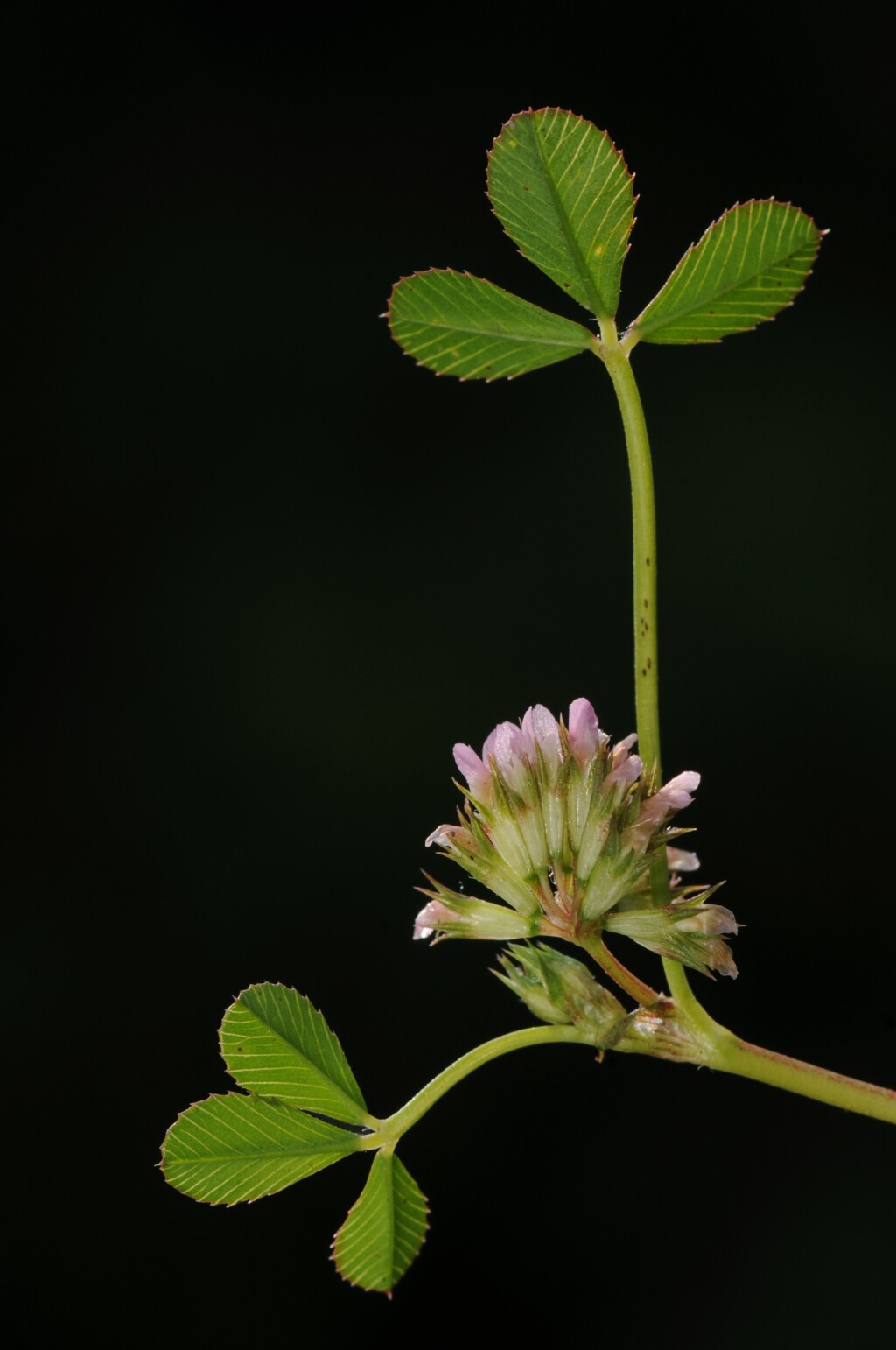Trifolium cernuum
Brot. Drooping-flower CloverProstrate or ascending annual herb; stems 5–40 cm long, branching, glabrous. Leaves palmately trifoliolate, long-petiolate; leaflets ovate-cuneate, 4–15 mm long, 3–12 mm wide, glabrous, finely toothed, apex truncate or emarginate; stipules white-membranous. Inflorescence 8–20-flowered, axillary, umbellate to globose, c. 10 mm long, c. 10 mm wide, shortly pedunculate; pedicels c. 2 mm long, becoming recurved in fruit. Calyx c. 4 mm long, more or less glabrous, tube cylindric, 5–20-veined, throat open, teeth sub-equal, as long as tube or shorter, spiny, erect in fruit; corolla 4–5 mm long, pink, persistent; standard obovate, spoon-shaped, deeply emarginate. Pod obloid, 3–4 mm long, membranous, exserted from calyx tube; seeds 1–4, ovoid, c. 1 mm long, yellow. Flowers mainly Sep.–Jan.
LoM, MuM, Wim, GleP, Brid, VVP, VRiv, MuF, GipP, OtP, WaP, Gold, CVU, GGr, DunT, NIS, EGL, HSF, HNF, OtR, Strz, MonT, HFE, VAlp. Also naturalised WA, SA, NSW, ACT, Tas. Native to western Europe, northwest Africa. Common and well-established weed throughout much of Victoria.
Jeanes, J.A. (1996). Fabaceae. In: Walsh, N.G.; Entwisle, T.J., Flora of Victoria Vol. 3, Dicotyledons Winteraceae to Myrtaceae, pp. 663–829. Inkata Press, Melbourne.
 Spinning
Spinning



